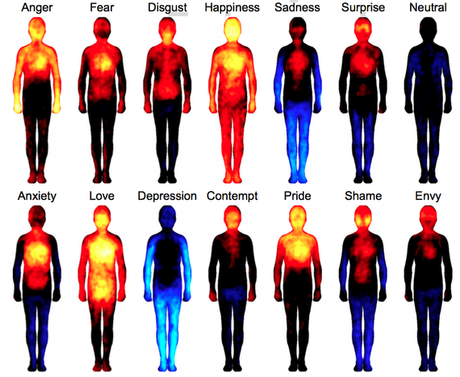How often do people feel ‘butterflies in their stomach’ or go ‘weak on their knees’? Or get a ‘hot head’ during the argument? Or having ‘cold feet’ and what about those occasional ‘feeling blue’? Repeated and collective practice of getting associated with the ‘bodily feeling’ rather than with the mental ability to cognize and assess the external stimuli has made these phrases so widely used. So basically one can map the ‘emotions’, quite naively, on a ‘tangible’ plane. We all have done this until vipassana has taught us how to observe them and how to disown their impact on our rationality. Dhamma is universal as we are told. It is the law of nature. So the impurities that are being uprooted by the practice of it must be a global truth as every being suffers from them similarly.
Modern science, with all its virtue and grandeur, has slowly started exploring the interface of mind-body interaction. What is modern science’s take on the universality of the perceived reality?
Here I share this interesting piece of work which has got commendable recognition in the science fraternity and talks about the emotions works in a consistent fashion for everyone when it comes to eliciting a physical response.
“Across five experiments, 701 participants “were shown two silhouettes of bodies alongside emotional words, stories, movies, or facial expressions. They were asked to color the bodily regions whose activity they felt increasing or decreasing while viewing each stimulus.” The mapping exercise produced what you might expect: an angry hot-head, a happy person lighting up all the way through their fingers and toes, a depressed figurine that was literally blue (meaning they felt little sensation in their limbs). Almost all of the emotions generated changes in the head area, suggesting smiling, frowning, or skin temperature changes, while feelings like joy and anger saw upticks in the limbs—perhaps because you’re ready to hug, or punch, your interlocutor. Meanwhile, “sensations in the digestive system and around the throat region were mainly found in disgust,” the authors wrote. It’s worth noting that the bodily sensations weren’t blood flow, heat, or anything else that could be measured objectively—they were based solely on physical twinges subjects said they experienced.”

The correlations between the subjects’ different body maps were strong—above .71 for each of the different stimuli (words, stories, and movies). Speakers of Taiwanese, Finnish, and Swedish drew similar body maps, suggesting that the sensations are not limited to a given language.
So what are we seeing in these illustrations? The authors note that, measured physiologically, most feelings only cause a minor change in heart rate or skin temperature—our torsos don’t literally get hot with surprise.
Instead, the results likely reveal subjective perceptions about the impact of our mental states on the body, a combination of muscle and visceral reactions and nervous system responses that we can’t easily differentiate. Feeling jealous may not truly make us red in the face, for example, but we certainly might feel like it does.”
http://www.theatlantic.com/health/archive/2013/12/mapping-how-emotions-manifest-in-the-body/282713/
